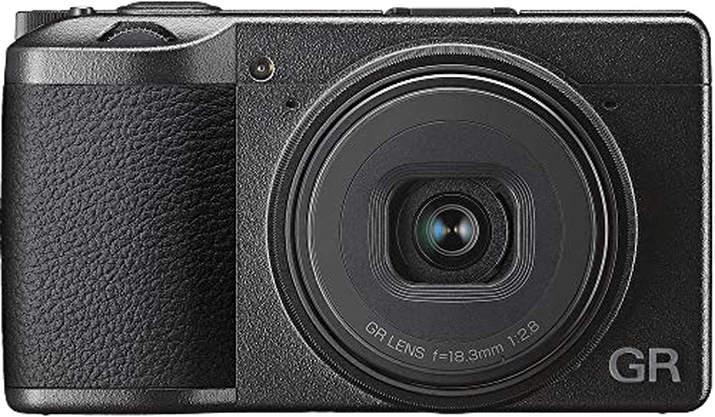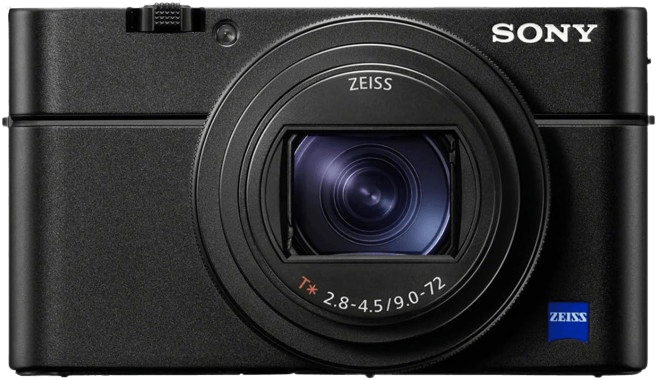Ricoh GR III vs Sony Cyber-shot DSC-RX100 VII Comparison
Ricoh GR III

Sony RX100 VII

The Ricoh GR III takes the lead with a score of 66/100, while the Sony Cyber-shot DSC-RX100 VII trails closely behind at 60/100. Both cameras share a compact design, making them easy to carry around for daily use. The Ricoh GR III outperforms the Sony in terms of size and weight, measuring 109 x 62 x 33mm and weighing 257g, making it more portable and lightweight. Additionally, the Ricoh GR III is more affordable with a launch price of $899 compared to Sony’s $1200.
However, the Sony Cyber-shot DSC-RX100 VII has its own advantages, such as a more recent release year (2019) compared to the Ricoh GR III (2018). This may suggest that the Sony camera has more up-to-date technology and features. Despite the higher price and larger size, some users might prefer the Sony model due to its newer release and potential for improved performance.
Taking all these factors into account, the Ricoh GR III emerges as the winner in terms of portability and affordability, while the Sony Cyber-shot DSC-RX100 VII offers a more recent release for those who prioritize updated technology.
Ricoh GR III vs Sony Cyber-shot DSC-RX100 VII Overview and Optics
The Ricoh GR III triumphs over the Sony Cyber-shot DSC-RX100 VII in optics with a score of 68/100 compared to the latter’s 61/100. Both cameras share some similar specifications, including a CMOS sensor type, fixed lens mount, and image stabilization.
The Ricoh GR III outperforms the Sony Cyber-shot DSC-RX100 VII in several aspects. With 24 megapixels, it captures higher resolution images than the 20 megapixels offered by the Sony camera. The Ricoh GR III also boasts a superior DXOMARK sensor score of 76, compared to the Sony’s 63. This difference suggests that the Ricoh GR III’s APS-C sensor size provides better image quality and low-light performance than the Sony’s 1″ sensor.
However, the Sony Cyber-shot DSC-RX100 VII has its advantages. With a shooting speed of 5 frames per second, it is faster than the Ricoh GR III’s 4 frames per second. This feature makes the Sony camera more suitable for capturing fast-moving subjects or action scenes. Additionally, the Sony camera utilizes the Bionz X processor, which may contribute to its faster shooting speed.
To conclude, the Ricoh GR III offers superior optics due to its higher megapixel count, better DXOMARK sensor score, and larger sensor size. On the other hand, the Sony Cyber-shot DSC-RX100 VII provides a faster shooting speed that may appeal to some photographers. Ultimately, the choice between these two cameras depends on individual preferences and shooting requirements.
Ricoh GR III vs Sony Cyber-shot DSC-RX100 VII Video Performance
The Sony Cyber-shot DSC-RX100 VII outperforms the Ricoh GR III in video capabilities, scoring 91 out of 100 compared to the Ricoh’s 70. Both cameras share certain video specifications, such as having built-in time-lapse functionality. However, the Sony RX100 VII surpasses the Ricoh GR III in several aspects.
The Sony RX100 VII records videos at a maximum resolution of 4K (3840 x 2160), whereas the Ricoh GR III is limited to Full HD (1920 x 1080). This higher resolution allows the Sony camera to capture more detail and provide better overall video quality. Additionally, the Sony RX100 VII has a maximum video frame rate of 120fps, double that of the Ricoh GR III’s 60fps. This higher frame rate enables smoother slow-motion playback and more creative options for videographers.
Despite its lower score, the Ricoh GR III still has some advantages, primarily its compact size and lightweight design. This makes it a more portable option for those who prioritize a smaller camera for video recording. However, this advantage does not compensate for its lower video quality and frame rate compared to the Sony RX100 VII.
When comparing the video capabilities of these two cameras, the Sony Cyber-shot DSC-RX100 VII is the clear winner with its superior resolution and frame rate. The Ricoh GR III may be more portable, but it falls short in providing the same level of video quality. For those seeking a camera with strong video performance, the Sony RX100 VII is the better choice.
Ricoh GR III vs Sony Cyber-shot DSC-RX100 VII Features and Benefits
The Ricoh GR III wins in the features comparison with a score of 70/100, while the Sony Cyber-shot DSC-RX100 VII scores slightly lower with 68/100. Both cameras share several specifications, such as a 3-inch touchscreen, WIFI, and Bluetooth connectivity. Neither camera includes GPS functionality.
The Ricoh GR III outperforms the Sony Cyber-shot DSC-RX100 VII in screen resolution, offering 1,037,000 dots compared to 921,000 dots. This higher resolution provides a clearer and more detailed image preview, allowing for better image composition and review.
On the other hand, the Sony Cyber-shot DSC-RX100 VII has an advantage with its flip screen feature, which the Ricoh GR III lacks. The flip screen enables users to shoot from various angles and take selfies more conveniently. This feature provides flexibility and versatility in shooting situations where a standard screen may prove limiting.
In this comparison, the Ricoh GR III’s superior screen resolution is its standout feature, providing greater detail and clarity for users. However, the Sony Cyber-shot DSC-RX100 VII’s flip screen offers additional shooting flexibility, which may be more valuable for some users. Ultimately, the choice between these two cameras will depend on individual preferences and priorities regarding screen resolution and functionality.
Ricoh GR III vs Sony Cyber-shot DSC-RX100 VII Storage and Battery
The Sony Cyber-shot DSC-RX100 VII outperforms the Ricoh GR III in storage and battery with a score of 29/100 compared to the Ricoh’s 27/100. Both cameras have one memory card slot and support USB charging. They both accept SD/SDHC/SDXC cards, but the Sony also accepts Memory Stick Pro Duo cards, offering more storage flexibility.
The Sony RX100 VII has a longer battery life, providing 260 shots per charge, while the Ricoh GR III manages 200 shots. This difference gives the Sony an advantage for extended shooting sessions. However, the Ricoh has internal storage in addition to the memory card support, which can be useful as a backup or for additional storage capacity.
Considering these factors, the Sony RX100 VII has a slight edge in storage and battery performance due to its longer battery life and broader memory card compatibility. The Ricoh GR III’s internal storage is a valuable feature, but it does not outweigh the advantages offered by the Sony.
Ricoh GR III vs Sony Cyber-shot DSC-RX100 VII – Our Verdict
Are you still undecided about which camera is right for you? Have a look at these popular comparisons that feature the Ricoh GR III or the Sony Cyber-shot DSC-RX100 VII:
- Ricoh GR III vs GR IIIx
- Ricoh GR IIIx vs Sony Cyber-shot DSC-RX100 VII
- Canon PowerShot G7 X Mark III vs Sony Cyber-shot DSC-RX100 VII
- Canon PowerShot G5 X Mark II vs Sony Cyber-shot DSC-RX100 VII
- Panasonic Lumix ZS200 (TZ200) vs Sony Cyber-shot DSC-RX100 VII
- Canon PowerShot G1 X Mark III vs Sony Cyber-shot DSC-RX100 VII

